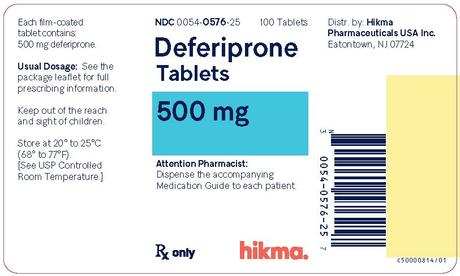Chelation Therapy For Superficial Siderosis
In cases of superficial siderosis, attempting to remove the hemosiderin deposits with the prescription chelator deferiprone will be an unfamiliar treatment option to most physicians. If you have made a personal decision to attempt this line of therapy, you will need to gather as much reliable information as possible. Having information packets available when you meet with a new specialist can save valuable time. Follow these seven steps to enhance your chelation experience.
Step one: track down the current research  online, download and print out multiple copies.
online, download and print out multiple copies.
We passed out these research packets to every doctor we met with along the way. This way, we were able to present a credible, study-backed argument for attempting chelation. Our first meeting was with the neurosurgeon, who ordered the MRI to diagnose the superficial siderosis. He emailed Dr. Levy and, after reviewing the protocol, recommended a neurologist would be better suited to oversee care. We began our search.
Step Two: Find a neurologist
While we were trying to find a neurologist, we returned to our PCP, presented our information packet, and made our case for beginning chelation as soon as possible. He studied our research before we returned for our follow-up meeting. He agreed with our conclusion; if we wanted to slow progression, chelation was our only choice. However, our PCP felt uneasy overseeing the therapy. He referred us to a hematologist who could prescribe Ferriprox and monitor Gary's blood levels.
Step three: Find a hematologist
Our primary care physician submitted the referral. Two months after Gary's initial diagnosis, we met his new hematologist with our research folder in hand. After reviewing Gary's case history, the published report on the Ferrirpox Trial, and Dr. Levy's recommended chelation protocol, he agreed to accept Gary as a patient.
We still did not have a neurologist.
Get Ready To Rumble
Deferiprone is a Tier-5 specialty drug in the United States, and prescribing it for superficial siderosis is designated an off-label use. If you have private insurance, you are almost guaranteed a denial letter will arrive after your doctor's first request. Private Insurance, Medicare, and Medicaid will always request step drugs first. You need to have your prescribing doctor be very familiar with insurance appeals or have them contact Dr. Levy for documentation of why no other iron chelator can cross the blood-brain barrier.
Step four: Find an experienced prescription appeal advocate
The Veterans Administration (VA) health care system is the only one we have heard that will approve the use of Deferiprone without a denial.
Filling Your Deferiprone Prescription
In the U.S, there's are now several options for filling your Deferiprone prescription. If your insurance allows coverage, then you may want to check out Chiesi Total Care , a patient support services program offered by Chiesi USA, Inc. Their specialty pharmacy, located in Missouri, provides an outstanding support team and offer the services of a pharmacist to answer any question you might have. They will assist in insurance appeals, provide automatic monthly refills shipped directly to your door, and answers any chelation-related questions you may have.
Your second option might be the newly approved generic formulation of Deferiprone. Manufactured by Taro Pharmaceuticals and distributed by BioPlusRX , this generic was touted to be an affordable alternative to Ferriprox. Unfortunately, this has proven not to be the case. A recent website search only offers information on the brand name formula, so further investigation is needed to determine if an actual generic formulation is available.
The third option is to find a source out of the country for a generic deferiprone formula, trade name Kelfer, by Indian Drug Manufacturer Cipla Ltd. Several Indian pharmacies will ship into the United States.

The drug manufacturer HIKMA Pharmaceuticals was approved on March 29, 2021, to begin manufacturing a generic formulation of deferiprone. A mock-up of their proposed packing suggests they might make their formulation available through regular pharmacies.
Step five: Prepare yourself for the cost
Ferriprox is a very costly medication. The retail price per 100 count bottle has risen dramatically over the past seven years. Every insurance company will negotiate for their individual pricing, but at almost $9,000 a bottle retail on the high end, you have to hope your insurance provider is a strong negotiator. When Gary began taking Ferripriox in 2014, his prescription coverage was an employer-provided health insurance plan. The out-of-pocket copay for a Tier-5 drug was $1,000 a month. This copay rose significantly after he went on a privately purchased insurance policy in 2015. The average family may not be in a financial position to afford their portion.
Some states offer co-pay assist programs that are income-related if you are on Medicaid/Medicare and don't have a supplemental policy. Folks with a PPO policy seem to have an easier time with prescription approval than those with HMO coverage.
Speaking with patients over the years makes it obvious how different prescription coverage depends on your policy. A Medicare-Medicaid combination seems to offer the most cost-friendly copay.
Update: Gary entered the VA healthcare system in 2017. His chelation use was approved in under 30 days after the VA put him under the care of a hematologist. We pay a monthly co-pay of $11.When Your Deferiprone Arrives
The manufacturer strongly recommends regular testing of blood levels to ensure you don't develop agranulocytosis. If your neutrophil level drops too low, your doctor will cycle you off the medication until your neutrophils return to a safe level.
Step six: Never skip your blood tests
When you are ill, you may need to take a medication break until you are better. For example, it helps to cycle off your medication if you are put on an antibiotic until you've finished your entire course. You should also have monthly blood tests to monitor for liver toxicity or zinc deficiency.
Agranulocytosis is a white blood cell deficiency whose job is to fight off infection. It is a very serious and dangerous condition and needs to be addressed immediately.
Follow The Directions
The manufacturer doesn't recommend taking your deferiprone dose within four hours of ingesting anything with a chemical or enrichment added iron, aluminum, or zinc. This is because iron or zinc supplements may not entirely exit your system before your next cycle of medication.
The simultaneous use of deferiprone with
that contain polyvalent cations has not been studied. However, since deferiprone has the potential to bind to and remove polyvalent cations (herbal and vitamin supplements may contain polyvalent cations, including aluminum, calcium, iron, magnesium, and zinc ions), the manufacturers recommend you allow at least a 4-hour interval between taking deferiprone and other medications (e.g., antacids), herbal supplements, food, or vitamins.
Step seven: Don't waste your dose
Dr. Levy suggests that you avoid eating high iron foods during a window before and after your dose (2 hours before dose time to 2 hours after). The iron from your food will be to what the deferiprone molecules bind to remove first. You have a limited window of time your chelator is working for you before it leaves your body in your urine. If it's binding to the iron in your bloodstream, nothing will be left to cross the blood-brain barrier.
There is a popular question concerning iron consumption if you are not currently on chelation therapy. There is no need to restrict the dietary consumption of iron. The only reason these restrictions are suggested is to help enhance the chelation effect.
This information is offered as a suggested guideline to U.S patients only. Please review this information with your personal physician and follow the dosing guideline they tailor to your specific case.
Original article published 08.26.2015 This article has been revised to include the latest information Article Updated: 08.22.21

